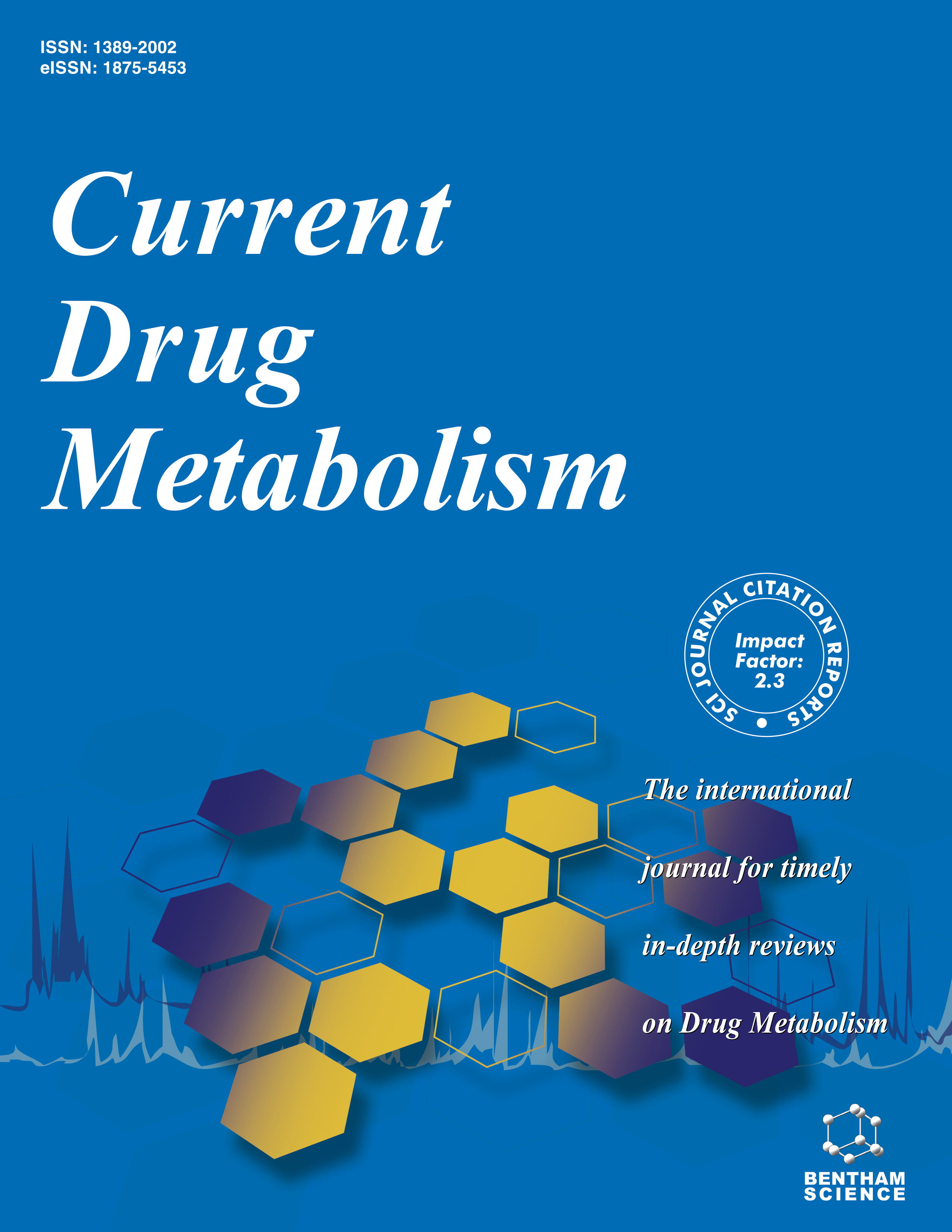- Home
- A-Z Publications
- Current Drug Metabolism
- Previous Issues
- Volume 23, Issue 12, 2022
Current Drug Metabolism - Volume 23, Issue 12, 2022
Volume 23, Issue 12, 2022
-
-
Human Orphan Cytochromes P450: An Update
More LessAuthors: Dora Molina-Ortiz, Carmen Torres-Zárate and Rebeca Santes-PalaciosOrphan cytochromes P450 (CYP) are enzymes whose biological functions and substrates are unknown. However, the use of new experimental strategies has allowed obtaining more information about their relevance in the metabolism of endogenous and exogenous compounds. Likewise, the modulation of their expression and activity has been associated with pathogenesis and prognosis in different diseases. In this work, Read More
-
-
-
Pharmacokinetic/Pharmacodynamic Study of Salt-Processed Product of Cuscutae Semen with Hepatoprotective Effects
More LessAuthors: Ying Zhang, Shuya Xu, Mengnan Liu, Xinfang Xu, Ting Han, Zhe Jia, Xiangri Li and Ruichao LinBackground: Salt-processed product of cuscutae semen (SCS), which is documented in Chinese pharmacopoeia (2020 edition), is one of the processed products of cuscustae semen. SCS possesses hepatoprotective effects. However, Pharmacokinetic/Pharmacodynamic (PK-PD) study of SCS with intervening acute liver injury (ALI) has not been reported yet. Effective constituents are still not well addressed. Objective: This Read More
-
-
-
Comprehensive Metabolism Study of Tangeretin in Rat Plasma, Urine and Faeces Using Ultra-High Performance Liquid Chromatography-Q Exactive Hybrid Quadrupole- Orbitrap High-Resolution Accurate Mass Spectrometry
More LessAuthors: Xiaojun Yu, Zhufeng Cong, Changlin Wang, Shengguang Wang, Zhi Yan, Bin Wang, Xiaonan Liu, Zhen Li, Peng Gao and Huaixing KangBackground: Tangeretin, present in citrus fruits, is a polymethoxy flavone with extensive pharmacological effects. It has been widely used in the clinic, but there were no detailed studies on the in vivo metabolism of tangeretin. Objective: This study aimed to establish a rapid and effective strategy to identify the metabolites of tangeretin and evaluate the biotransformation pathways of tangeretin in rats. Methods: The ultra- Read More
-
-
-
The Effect of Coenzyme Q10 as a Part of Standard Therapy on Plasma Concentrations of Ubiquinol, Ubiquinone, Total CoQ10 and its Redox State in Patients with Ischemic Heart Disease
More LessBackground: Despite CoQ10 being a powerful antioxidant and its redox state that may characterize the body’s antioxidant system, the latter remains unstudied in patients with cardiovascular diseases. Objective: This prospective case-control study aimed to investigate the concentrations of ubiquinol, ubiquinone, total CoQ10 and its redox state in patients with ischemic heart disease (IHD) and arterial hypertension (AH) duri Read More
-
-
-
Covalent CES2 Inhibitors Protect against Reduced Formation of Intestinal Organoids by the Anticancer Drug Irinotecan
More LessAuthors: William Eades, William Liu, Yue Shen, Zhanquan Shi and Bingfang YanBackground: Irinotecan is widely used to treat various types of solid and metastatic cancer. It is an ester prodrug and its hydrolytic metabolite (SN-38) exerts potent anticancer activity. Irinotecan is hydrolyzed primarily by carboxylesterase-2 (CES2), a hydrolase abundantly present in the intestine such as the duodenum. We have identified several potent and covalent CES2 inhibitors such as remdesivir and sofosbuvir. Rem Read More
-
Volumes & issues
-
Volume 25 (2024)
-
Volume 24 (2023)
-
Volume 23 (2022)
-
Volume 22 (2021)
-
Volume 21 (2020)
-
Volume 20 (2019)
-
Volume 19 (2018)
-
Volume 18 (2017)
-
Volume 17 (2016)
-
Volume 16 (2015)
-
Volume 15 (2014)
-
Volume 14 (2013)
-
Volume 13 (2012)
-
Volume 12 (2011)
-
Volume 11 (2010)
-
Volume 10 (2009)
-
Volume 9 (2008)
-
Volume 8 (2007)
-
Volume 7 (2006)
-
Volume 6 (2005)
-
Volume 5 (2004)
-
Volume 4 (2003)
-
Volume 3 (2002)
-
Volume 2 (2001)
-
Volume 1 (2000)
Most Read This Month
Article
content/journals/cdm
Journal
10
5
false
en


